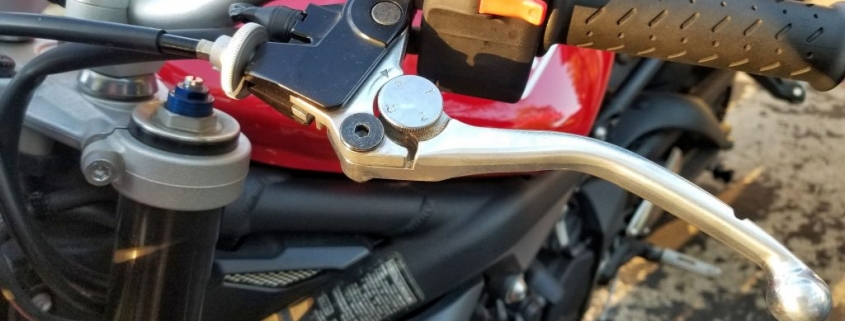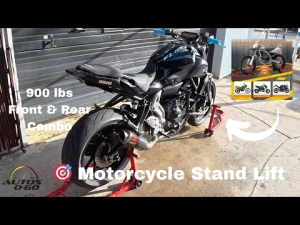Your Motorcycle Clutch Cable Could Use an Adjustment
From the throttle body to the ignition system, many mechanical motorcycle components have been supplanted by electronic ones. And, to be fair, in many cases, that’s to the benefit of riders. But even on some new bikes, a few mechanical parts remain, such as the clutch cable. And just like any other motorcycle part, even if it isn’t broken, it still requires periodic maintenance.
What does a motorcycle clutch cable do?
Although motorcycle and car transmissions aren’t identical, they share several similarities. That includes, in the case of manual models, a clutch that allows the rider to shift gears. It’s just that, apart from some antique models, motorcycles have clutch levers rather than pedals. And rather than a single friction disc, motorcycle clutches have stacks of several smaller discs to make packaging easier, Motorcyclist explains.
Whether you’re talking about a clutch lever or a pedal, though, the basic operating principle is the same. Pulling on the lever disengages the clutch’s friction discs, some of which are driven by the engine, from each other via a pressure plate, Cycle World explains. This mechanically separates the engine’s flywheel and transmission and lets you shift gears. Once you’ve selected the gear you want, you smoothly open the throttle and release the clutch lever. The friction discs re-engage, and the bike keeps going.

This is where the clutch cable comes in. It’s typically made of braided steel and is held under tension between the clutch lever and a bracket by the engine. And it’s the clutch cable that transmits force between the lever and the pressure plate. Pulling and releasing the lever moves the cable and thus the plate.
Why is adjustment necessary?
Not every motorcycle has a clutch cable. Some bikes use hydraulically-operated clutches, RevZilla notes, which work like the ones found on cars. Instead of a clutch cable, these bikes link the lever and pressure plate via pressurized fluid. It’s a more complex and expensive setup, but it has several benefits over a cable-operated system, Motorcyclist reports. Namely, hydraulic systems don’t require as much upkeep.
Clutch cables might be made of metal, but like any cable, they stretch over time, creating slack. Friction plate wear also creates slack; adjusting the handlebars can, too. And a slack cable makes shifting and finding bite points more difficult. Plus, if the clutch cable is slack enough, you won’t be able to work the clutch at all.
RELATED: The Honda Africa Twin DCT Is an Eye-Opening Experience
However, too little slack is also a problem. Too much cable tension prevents the friction discs from properly engaging, Motorcyclist reports. This leads to glazed discs which can’t grip each other securely. That leads to clutch slip, reducing performance and eventually preventing any power from reaching your rear wheel, BikeBandit explains.
How do you adjust a motorcycle clutch cable?
RELATED: Should You Upgrade Your Motorcycle Suspension?
However, before any of that happens, you can adjust the clutch cable to the correct level of tension. And all you need is a wrench and a ruler or a tape measure.
The first step is measuring your clutch cable’s free-play. To do this, gently pull on the clutch lever until you just feel it engaging. Then, measure the distance between the back of the lever and the perch, as shown in the video above. If the free-play falls outside of the manufacturer’s recommended setting, your clutch cable needs adjustment.

RELATED: What’s Different About Car and Motorcycle Maintenance?
A typical motorcycle clutch cable has two adjusters: a fine one by the lever and a locknut one by the engine. If you’re only slightly outside the recommended free-play range, the fine adjuster should suffice. Moving/turning it in increases free-play and moving/turning it out decreases it.
The locknut adjuster comes into play when the fine adjuster isn’t enough. Moving it towards the lever by loosening the front nut and tightening the rear one increases free-play. And moving the adjuster away from the lever by doing the opposite decreases free-play.
When it’s time to replace the cable
A motorcycle clutch cable might be adjustable, but only to a point. As shown in the photos above, the nuts on the locknut adjuster only have so much room to move. Ditto the fine adjuster by the lever. If they’re at their limits and you still need more tension, you need a new clutch cable. And naturally, a broken or frayed cable needs to be replaced, too.
RELATED: Can You Hook a Motorcycle up to an OBD-II Scanner?
Speaking of breaking, it doesn’t just happen to old cables. Your motorcycle clutch cable needs periodic lubrication and cleaning to protect it and make it sure works smoothly. It’s possible to do that without removing the cable from the bike, but it’s less messy if you do, Motorcyclist reports. And there are dedicated tools that make the job easier.
Follow more updates from MotorBiscuit on our Facebook page.
The post Your Motorcycle Clutch Cable Could Use an Adjustment appeared first on MotorBiscuit.






